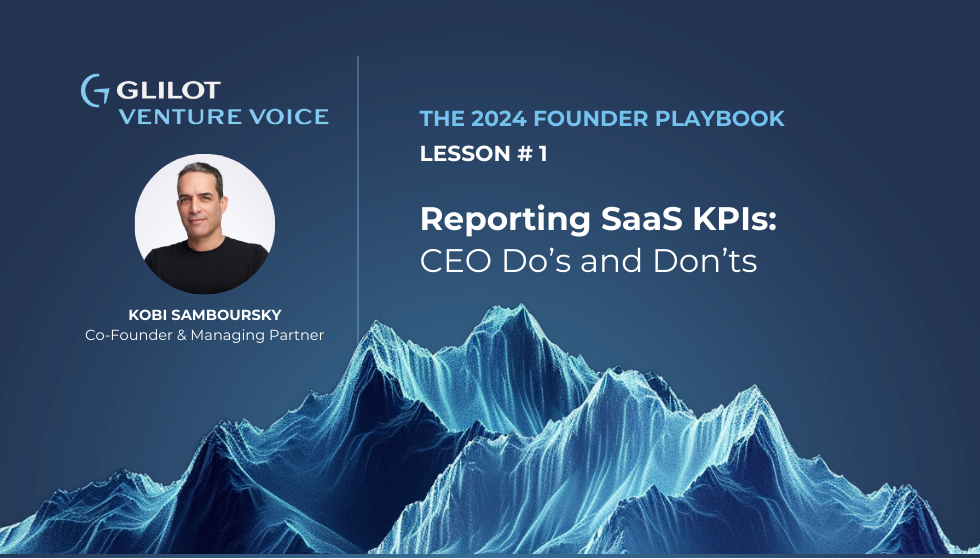Reporting SAAS KPIs: CEO Do’s and Don’ts

Over the past decade, Software as a Service (SaaS) has emerged as the de facto industry standard. As a result, key performance Indicators (KPIs) related to Saas, have become the most important benchmark for evaluating startup companies with metrics such as Annual Recurring Revenue (ARR) turned into the perceived goal on a quarterly or yearly basis. Despite their significance, even basic KPIs are not part of formal financial reports and are not subject to official audits by the company auditors. This has created a problematic situation in which companies are using their own interpretations to gauge KPIs, resulting in an array of approaches ranging from highly conservative to ultra aggressive.
During 2023, we witnessed instances of failed due diligence (investments as well as M&A) resulting from overly aggressive SaaS KPI calculations. At the same time, CEOs approached me, asking for clear guidance. It’s crucial to find a balance, being too aggressive, or too conservative puts your company at risk, falling behind competitors.
In this document, my aim is to offer straight forward guidance to CEOs. I explore potential friction points, common practices, and my recommendations to ensure that you are not misleading anyone or adopting an overly conservative approach. This blog can also serve as a valuable resource for investors and board members, aiding them in the due diligence process and providing guidance for their companies. Special thanks to Etti Hanochi, Partner at Nextstage, for her invaluable contributions in the development of this blog.
An important business note: many CEOs inquire about the right way to structure a deal to optimize the presentation of SaaS KPIs. In my perspective, the primary goal should always be the business aspect, structuring a deal that works for the client and optimizes the long term profit for your organization. The prioritization of the KPI presentation should come as a secondary concern. Accordingly, you can use the following recommendations to improve your strategies for deal structuring.
Multi-Year Deals
Issue: In some multi-year deals the price increases in later years. Which begs the question, which figures will you use in your ARR reporting? The price of the current year (typically lower)? The price of the last year in the contract? Or maybe the average? ( I have seen it all).
Resolution: This is a good example of the difference between ARR and Committed Annual Recurring Revenue (CARR). One can use the later (higher) figure in their CARR reporting (as long as the ‘C’ isn’t overlooked). When it comes to ARR, I would recommend using the current, lower figure, unless opting out is not possible (a rare occurrence in SAAS deals). In such cases, an average could also be considered a viable alternative.
Free (or highly discounted) initial months/quarters
Issue: A similar case to the above, where the initial phase involves a free trial, or substantial discount. How should you handle reporting your SaaS KPIs?
Resolution: If it’s a try and buy situation, refer to the bullet point below. If the client is genuinely committed, I suggest using an average or simply using the current figure (i.e., start with a lower value and adjust as needed). I prefer the latter approach since, typically, there is no real need to inflate the numbers for such a short time frame, and it aligns better with a long term perspective. It is crucial to note the importance of consistency; whichever solution you choose, maintain consistency in all future deals.
Trial and Buy / POC
Issue: How should you report trial and buy scenarios or paid Proof of Concepts (POCs)? In software subscriptions, trials and actual usage are very similar. I have seen cases where individuals incorporate such figures in their SaaS reports.
Resolution: This one is simple in my view, adding POCs in a big ‘No’. It’s a classic example of reporting that can be highly misleading and should be avoided (and will damage you in the long run as some of the POCs will not convert and the result will be a high churn rate).
Deals shorter than one year.
Issue: How do you present short-term deals? Some choose not to include them all together, while others incorporate the monthly rate to the Monthly Recurring Revenue(MRR) thereby increasing the ARR beyond the actual contract value (i.e., a $50K deal for 6 months might be reported as adding $100K to the ARR).
Resolution: To me, if the deal is very short, let’s say three months or so, it essentially functions as a POC and therefore, should not be included in the figure at all. For longer terms, like six months or more, incorporating the figures in your MRR/ARR metrics is acceptable. However, it is essential to recognize the risk. If the client does not extend the contract, you may face churn, which could be more damaging than having a lower ARR. Use caution when incorporating short-term deals into SAAS KPI calculations, specifically if its impact is significant.
When is the deal ‘done’?
Issue: B2B deals can take months to close, many times you know that a deal is ‘done’ before the actual contract is signed. When can you add a specific deal to your KPIs? Although accounting rules are explicit, they may not directly translate to SaaS KPIs. What should be done if the deal is confirmed in writing via email, but the contract isn’t signed? Similarly, how should a deal confirmed before the end of a quarter, with the contract signed just after the quarter concludes, be handled in the SAAS report?
Resolution: The threshold for recognizing a deal should, at a minimum, be a signed agreement. Verbal commitments or unofficial non-verbal agreements are not sufficient. I recognize that some companies may consider a scenario acceptable where the contract is signed after the end of the quarter, but before the reporting date.
Non recurring components
Issue: How should non-recurring components, often integrated into SAAS deals, such as professional services, expense reimbursement, and training, be treated? Some incorporate these into their Annual Recurring Revenue (ARR) figures, while others do not.
Resolution: Non-recurring components should not be included unless the client is committed to them regardless of usage, even if historical data shows ongoing consumption. This is a great example of the need to use Revenue Run Rate alongside ARR and an alternative KPI (reserving ARRs for actual subscription cases).
Usage- Based Pricing
Issue: What should the ARR calculation be for companies utilizing usage-based pricing models (pay per usage, payment based on data etc.)?
Resolution: This is another great case for the use of Revenue Run Rate instead of ARR. I recognize that some companies present usage based pricing as ARR to meet investors expectations, it’s crucial to maintain transparency and consistency. If you choose to report it as ARR, provide a detailed explanation for the presented data and make sure to be consistent.



 Kobi Samboursky
Kobi Samboursky
 Lior Litwak
Lior Litwak